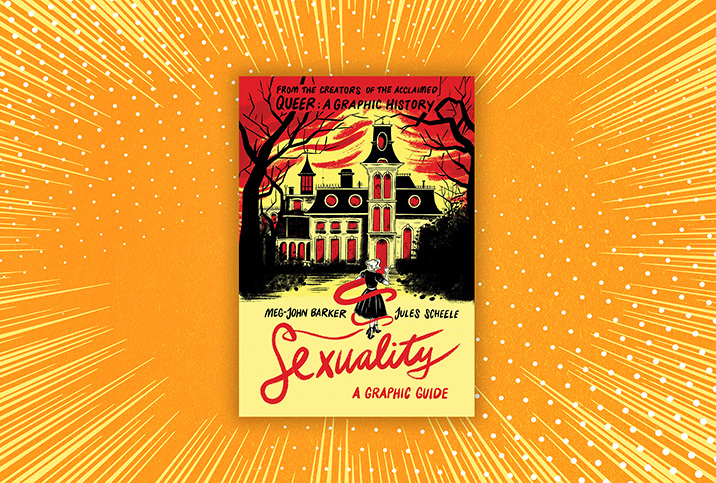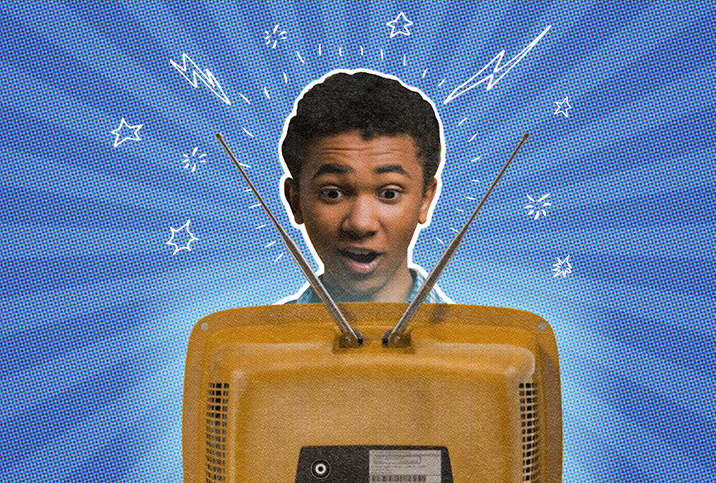Between the Pages: 'Sexuality: A Graphic Guide'

From the creators of graphic books, "Queer: A Graphic History" and "Gender: A Graphic Guide" comes "Sexuality: A Graphic Guide." Published in 2021 by Icon Books, the 176-page comic book offers an informative and inclusive look at sexuality.
Writer Meg-John Barker and artist Jules Scheele, who both use they/them pronouns, take the reader on a Scooby-Doo, gang-like journey as the book's four main characters encounter monsters like patriarchy, heteronormativity, ableism and white supremacy. The book is packed with quotes from (and illustrations of) leading sex researchers and theorists, helping make academic topics more accessible and fun.
Barker is the author of various+ books on sex, gender and relationships, including "Life Isn't Binary," "How to Understand Your Gender," "Enjoy Sex (How, When and IF You Want To)" and "Rewriting the Rules." You can read their blog at www.rewriting-the-rules.com.
In this exclusive interview with Giddy, Barker discusses the common sexuality myths they wanted to dispel, why a focus on sexual "dysfunction" is problematic, Scheele's eye-catching illustrations and more.
Editor's note: This interview has been edited for length and clarity.
What would you say is the purpose of the book as well as the intended audience?
Barker: Our aim was to provide a friendly, accessible guide to the various ways of understanding sexuality that are out there. Particularly, we wanted to highlight how the normative ways of understanding it in our culture at the moment are only one possibility, and often a not particularly helpful or accurate one.
Whenever I'm writing these books, I try to visualize the intended audience and create four characters for the reader to follow, who represent four different imagined readers. With "Gender: A Graphic Guide," for example, we had characters representing a young man confronting ideas around toxic masculinity; a feminist trying to locate herself and her femininity in that history; a trans nonbinary person; and an older person attempting to make sense of the rapidly shifting understandings of gender they were hearing about.
For "Sexuality," we got a bit more playful. I kept thinking about "The Rocky Horror Picture Show" [a 1970s stage musical and film] and how that has a very normative, supposedly straight couple confronting the scary/exciting world of sexuality. I liked the idea for our book, but obviously didn't want it only to be aimed at straight couples.
So we mashed up "Rocky Horror" with "Scooby-Doo" to come up with a gang of friends—two more normative and two more queer—who could enter the horror house/fun house of sexuality to learn about the topic and about themselves.
The book dispels a lot of myths and misconceptions regarding sexuality. What are a couple of examples of things you see often that you wanted the book to clear up?
I'd say the primary two myths we confronted in the book were the ideas that our sexuality is all about the gender of the people we're attracted to, and that sex is all about genital penetration with the aim of orgasm. We looked at the history of how we've come to those limited understandings, what's wrong with them and what we might put in their place.
Drawing on cutting-edge scholarship like Sexual Configurations Theory, as well as various sexuality movements, we explored how sexuality is multidimensional. The gender of the people we're attracted to is important to some people, but not to others. It can mean different things, for example, physical bodies or roles taken. And other aspects of sexuality are just as vital, if not more so, including various characteristics of a person, how much sexual desire we experience, the kinds of sensations, contexts, dynamics we do or don't enjoy sexually and more.
With the "sex act," we drew on thinkers like Audre Lorde who have pointed out that "the erotic" can encompass way more than genital contact with another person. We explored various erotic practices including those done alone, with groups and with nature, as well as the diverse reasons people might engage in these.
What are some ways in which the current medical and therapeutic understanding of sexual "dysfunction" is problematic?
If you check out the lists of sexual dysfunctions, you'll see they are all about failure to follow that normative sexual script. They're all about people not feeling desire for penetrative sex; penises not getting erect for penetration or ejaculating too soon for penetration; vaginas being too tense for penetration; or people not being able to reach the assumed destination of orgasm. Again, this is bad for everyone: people who want to have penetrative sex, people who might enjoy other forms of sex more and people who don't want to have sex at all.
If you do want to have penetrative sex, the worst thing you can do is to pressure yourself to become erect/open and to reach orgasm. It's a bit like how trying to fall asleep is the worst thing for insomnia. It's far better for people to learn how to tune in to their bodies and be in the moment, rather than aiming for anything.
Given how much people are having sex when they don't want to, or engaging in nonconsensual sex, it would be great if we could shift to making the aim of any encounter "consent happening" rather than "sex happening," or "orgasm happening." We also need to recognize that many people are on the asexual spectrum and most people have periods of their life when they're not sexual.
If we could open up a sense of a smorgasbord of erotic practices of all kinds that people might enjoy, then they could explore what they actually desire instead of feeling limited to this sexual script that may or may not do it for them
Talk about what illustrator Jules Scheele brought to the book.
So much! I always say these books are a collaboration between three people: me, Jules and Kiera, the editor. They wouldn't be possible without the three of us working together, just as they wouldn't be possible without all the different voices, which we weave together through the books and the various people who support us.
Their beautiful drawings fit the content perfectly. Given we have so few words to play with on every page, we really need the illustrations to do a lot of the work in conveying the ideas we're covering. Jules often finds ways to make the picture worth a thousand words.
Also, it feels important that people see images of the various scholars, activists, creators, etc. who we are drawing upon in the books. I think that makes them more human and real, inviting readers to follow up with the people who resonate with them.
Finally, Jules draws relatable characters so readers can, hopefully, see people like themselves represented in the books, asking the same kinds of questions and having the same kinds of feelings. I think that's vital, as these books really want to lift the shame around these subjects, helping people to know their gender, sexuality, experience and identity is valid, understandable and worthy of deep respect and kindness, whatever it is.


















